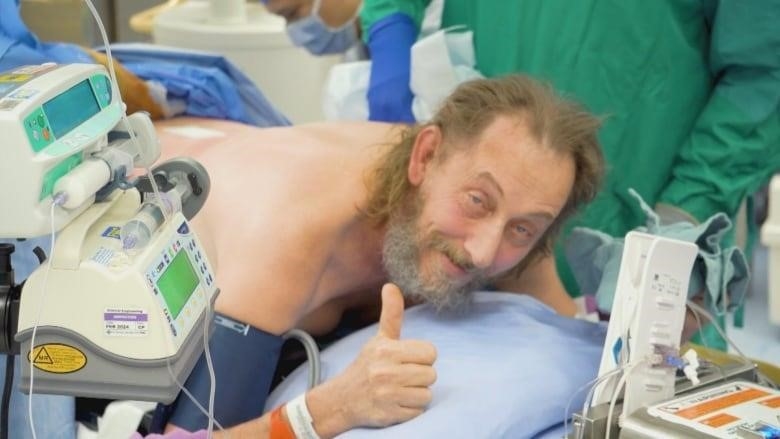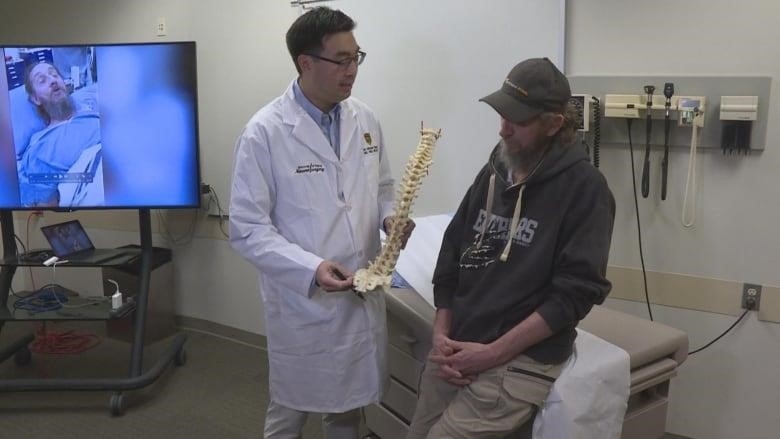
“The next morning, I got up and made breakfast for my grandchildren,” says the patient
Todd Bene, a man from Calgary who had back pain from a damaged disc, recently had spinal surgery while he was awake. This is thought to be a first in Canadian health care.
He said, “The next day, I was up early to make breakfast for my grandchildren and do other things.” “It was like night and day in terms of pain.”
Bene had a disectomy at the Foothills Medical Centre last month to remove the damaged part of a herniated disc in his spine, which he said caused him a lot of pain and made his life hard.
But after about 50 minutes in the operating room, which is about how long the surgery took, it was all over.
In the past, a patient would be given anesthesia and have a breathing tube put into their throat.
For Bene, things were different. He was awake and even sat on the table for some of the surgery. He was given a sedative and a local anesthetic instead of a general one. He could still talk to the doctors, including Dr. Michael Yang, who was in charge of the surgery.
“The biggest benefit of [awake] spine surgery is that patients recover from their spine surgery much faster,” Yang said.
“This is because the patient feels less pain, nausea, and vomiting after surgery… Also, without a general anesthetic, the heart and lungs are put under less stress, so there is less chance of complications during the surgery.”

Yang said that Bene has had a heart attack, heart failure, and coronary artery disease in the past. Yang said that doing the surgery under general anesthesia was risky because it can cause a lot of stress in a patient and can cause heart problems.
Yang learned about this new way of doing things during his fellowship at the University of Miami, where this kind of thing happened a lot more often.
He said that even though the surgery was “minimally invasive,” it wasn’t necessarily a big step forward in terms of how it was done.
But the process and teamwork, and what it means for the future of health care and technology in Calgary, were.
“We do a lot of minimally invasive surgery in Calgary, but the fact that neuro-anesthesia and the whole team worked together to make it possible to do it while the patient was awake was new,” Yang said.
“Despite this, we want to do more awake surgery in Calgary and more complex surgery while the patient is awake in Calgary. So, this is the first step toward being able to do these things.”
Yang says that the team plans to do more procedures and hopes to expand to other types of spinal surgeries. They want to speed up the process so that the province’s health care system doesn’t have to work so hard.
